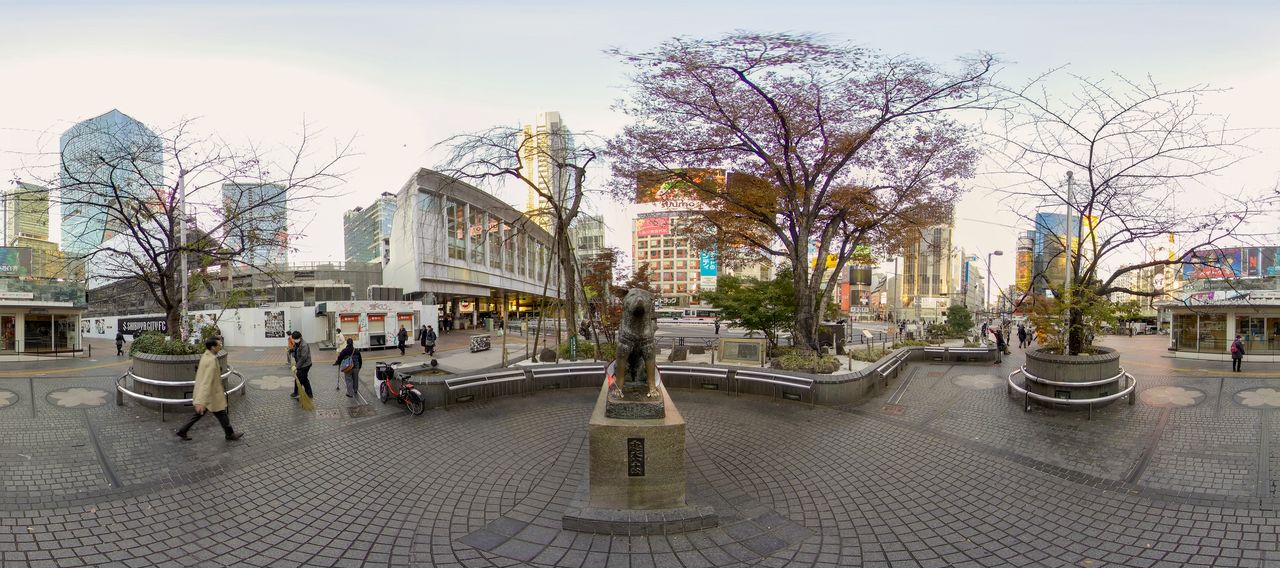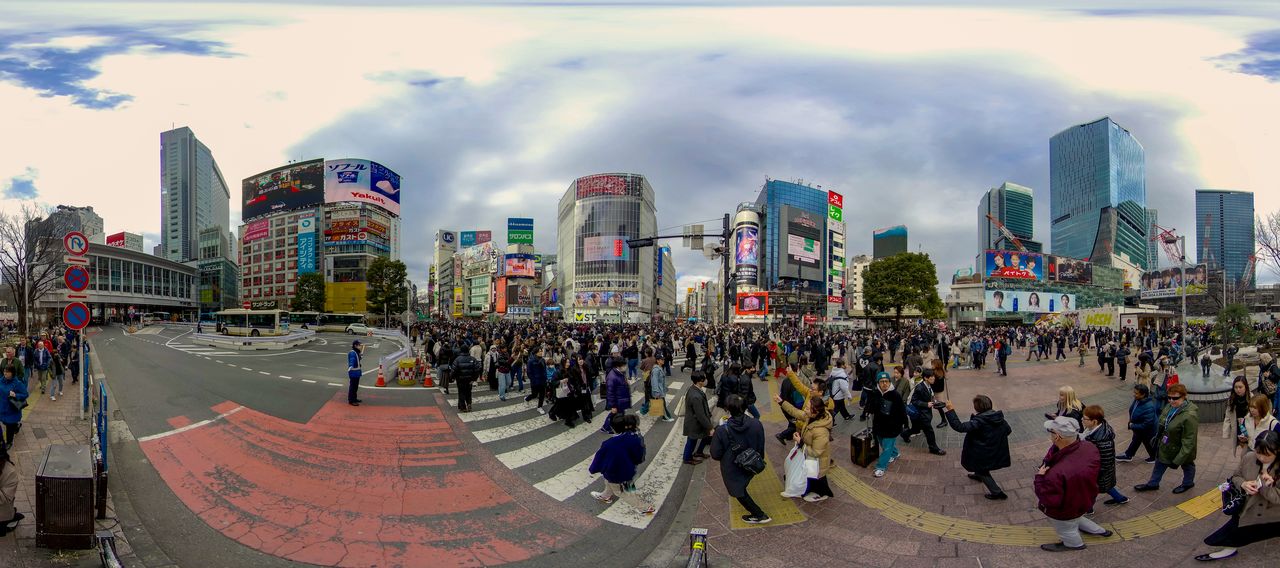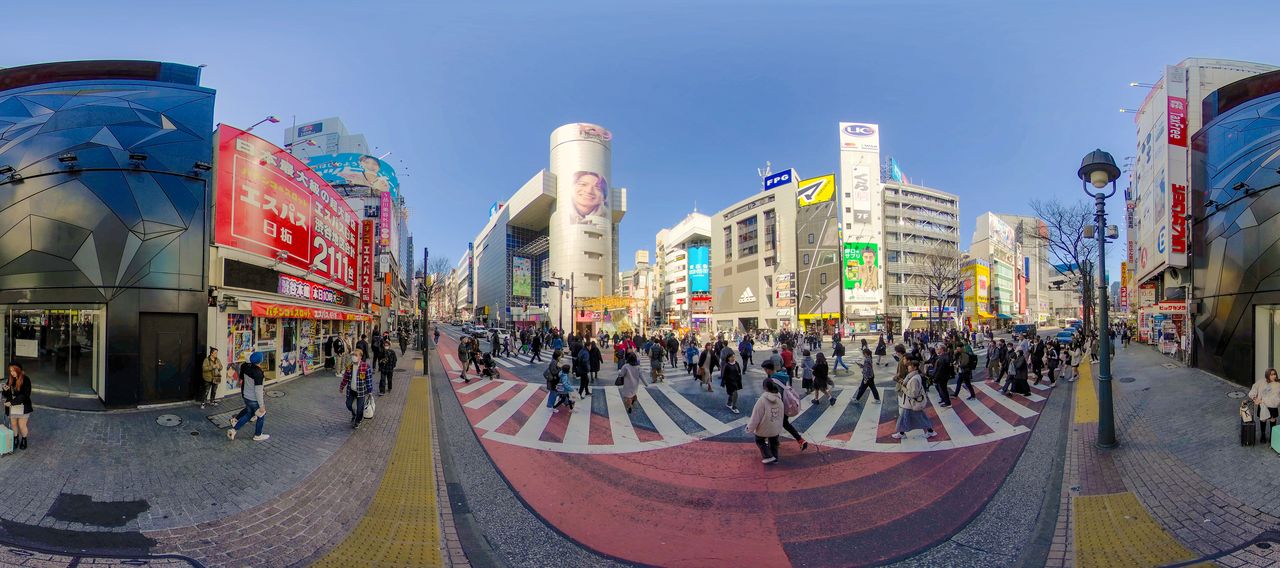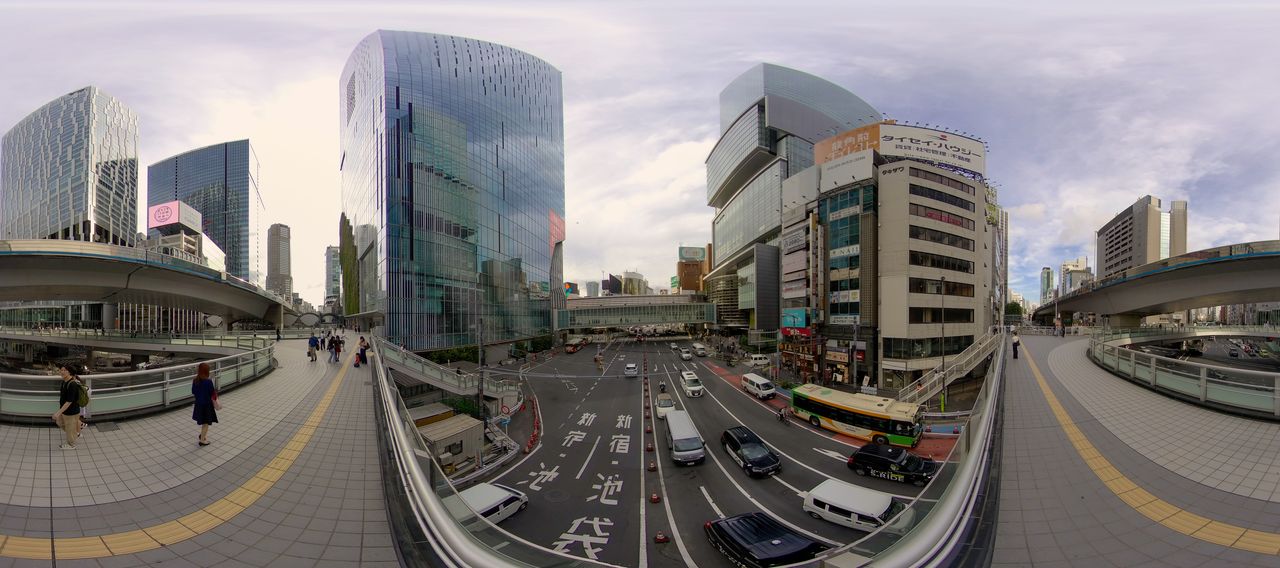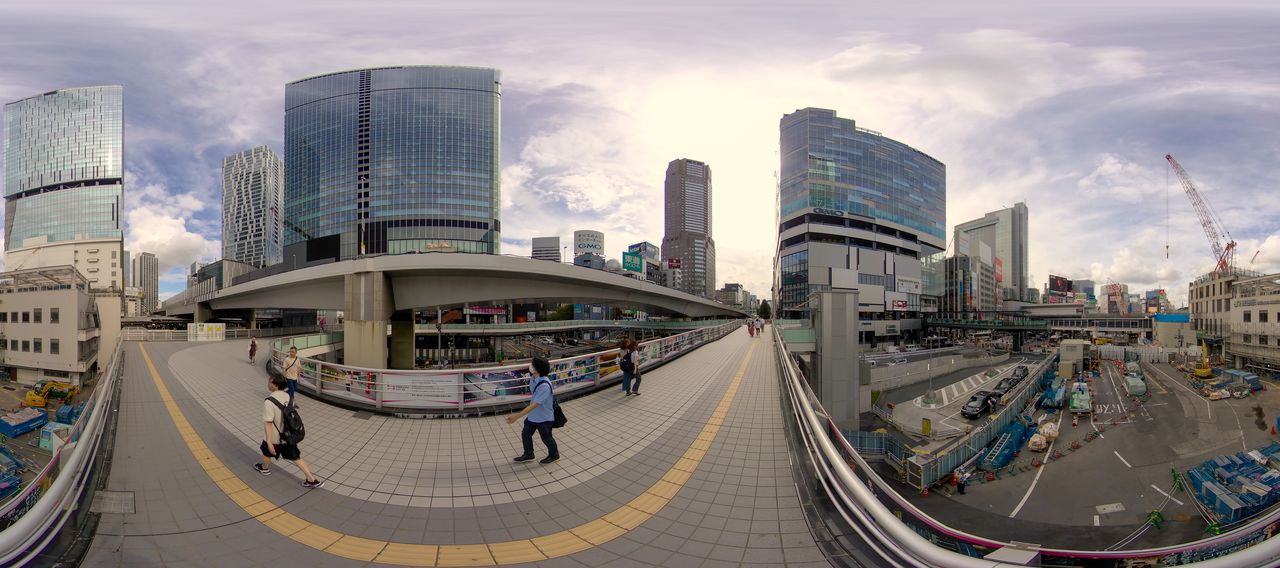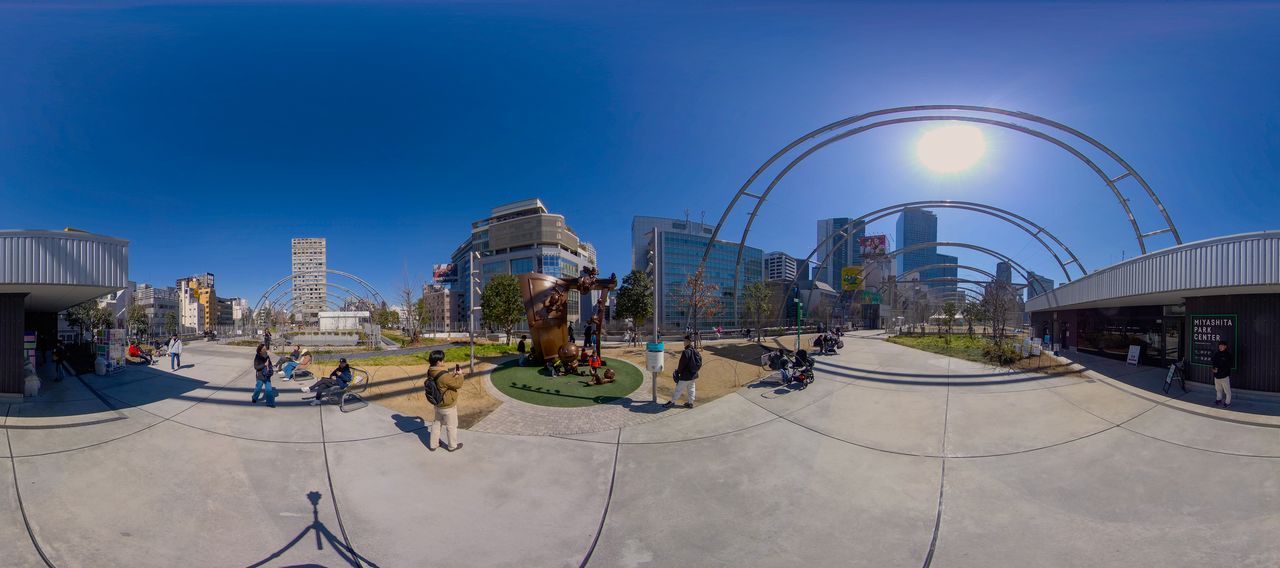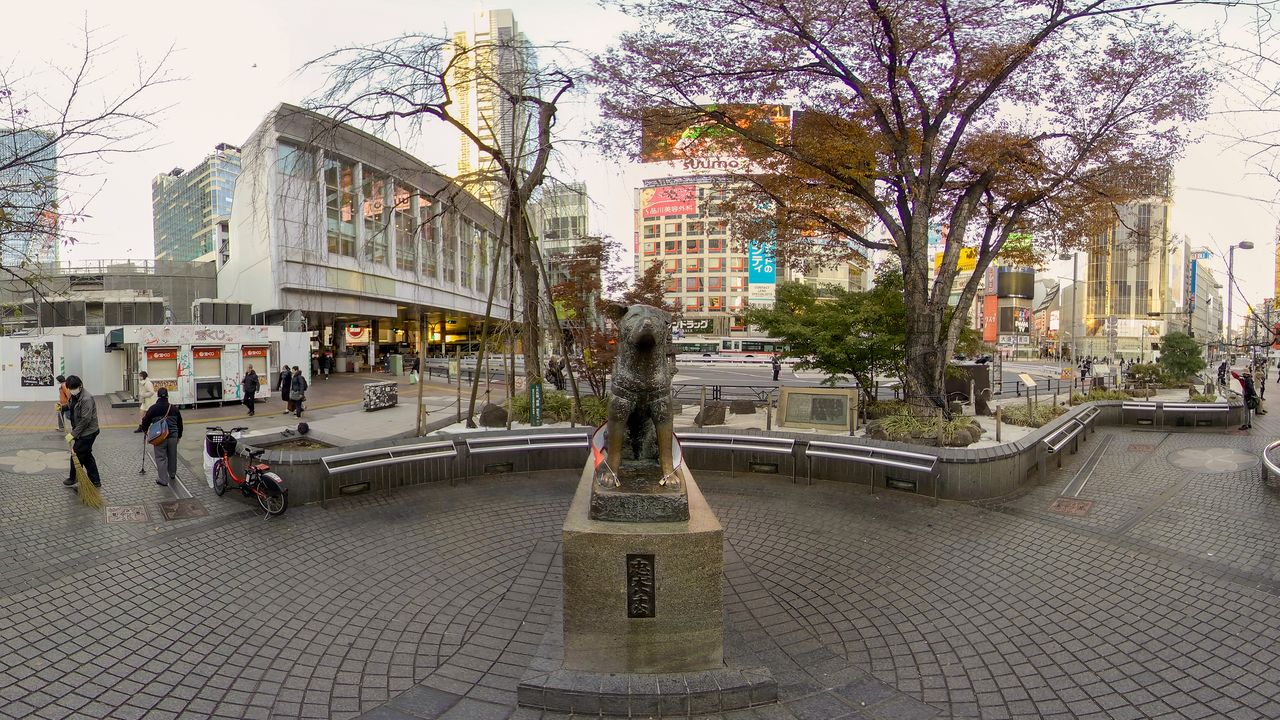
Shibuya Undergoes a Major Makeover
JapanIn video
Images Guide to Japan Architecture- English
- 日本語
- 简体字
- 繁體字
- Français
- Español
- العربية
- Русский
◆Viewing the 360º video◆
- On PC, click and drag your mouse cursor to look around.
- In the YouTube app on your smartphone or tablet, the view changes with the movement of your device. You can also swipe to move the view around.
- Using VR goggles or headsets makes the experience all the more immersive!
The Changing Face of Shibuya
Shibuya, a mammoth hub where nine rail lines owned by four operators converge, sees 2.29 million people a day flow through the station, making it one of the world’s major rail terminals. The bronze statue of Hachikō, which has stood in front of JR Shibuya Station for 90 years and lends its name to both an exit and ticket gates at the station, is also famous as a meeting spot. It is a popular photo-taking spot among foreign visitors, but crowds are so thick you may have trouble spotting the person you are meeting up with.
The statue of the dog Hachikō, erected in 1934. Hachikō is remembered for his loyalty to his master, for whom he continued to faithfully wait daily at the station even after the man’s passing. (© Somese Naoto)
Another popular attraction among visitors is the Shibuya scramble crossing, where up to 3,000 people at a time cross the street when the traffic light turns green. The sight of pedestrians gliding smoothly past each other in an intricate ballet that Tokyoites have elevated into an art is a sight that never fails to fascinate people from abroad.
Multiple massive video displays vie for attention at the crossing. (© Somese Naoto)
Diagonally across from the station is the entrance to Shibuya Center-gai, one of the district’s main streets. While Center-gai has been an epicenter of street fashion, it also developed an unsavory reputation as a gathering spot for groups of young punks known as “teamers.” The district was rebranded in 2011 as “Basketball Street,” but the new name has never really caught on.
On the other side of the JR lines is the Shibuya 109 Building. Once a shopping mecca for teen girls, in the mid-1990s it became “the” place where young women emulating the fashions of popular singer Amuro Namie shopped for clothing and accessories.
The crossing in front of the iconic Shibuya 109 Building. Drugstores clustered in the area are also popular with visitors. (© Somese Naoto)
Some young people would no doubt be surprised at the provenance of the building’s name, known familiarly as “Marukyū.” This comes from 10 (maru/tō) and 9 (kyū), a reference to the Tōkyū Group, the rail and real-estate conglomerate that established a presence in the area in 1927 with the opening of the Tōyoko Line linking Tokyo and Yokohama. In 1934, Tōkyū opened the Tōkyū Department Store (later renamed the Tōyoko branch; it would remain open until 2020), attached to the station, and in 1956 followed with the Tōkyū Bunka Kaikan (closed in 2003), which featured one of the country’s largest movie theaters and its first planetarium, as well as other commercial facilities in the district.
The fame of “Marukyū” as a fountainhead of youth culture proved fleeting, however, and Tōkyū is now in the process of remaking Shibuya into a destination for more mature consumers. Shibuya Mark City, which opened in 2000, has proved popular with tourists and with office workers seeking after-hours diversions.
Cerulean Tower, erected in 2001, stands southwest of the station. It was here that Google located its first overseas headquarters, initiating something of a boom of IT venture businesses in the late 1990s, which at one time promised to turn Shibuya into Japan’s answer to Silicon Valley. (At one point the district styled itself as “Bit Valley,” a play on the California area’s name that also referenced the meaning of the characters in Shibuya, “bitter valley.”) A lack of suitable office space later led many companies to leave Shibuya, but Google, which moved to Roppongi in 2010, returned in 2019, marking a renaissance for the area over the past few years.
Google leased the upper floors of Shibuya Stream, built in 2018 over the former Tōyoko Line above-ground tracks. Thanks to redevelopment, the Shibuya River has emerged from underground. (© Somese Naoto)
A mammoth Shibuya redevelopment project has been ongoing for more than a decade now. Lead developer Tōkyū ran the Tōyoko Line tracks underground, closed its department stores and other facilities, and used the land thus freed up to erect high-rise, multipurpose buildings. These include Shibuya Hikarie, a mixed-use building opened in 2012 that includes venues for art and musicals, and the Shibuya Scramble Square building, erected in 2019. Shibuya Sky, an observation deck atop that 229-meter-tall building, has been a smash hit with foreign visitors. With this grand redevelopment plan, Tōkyū has set about creating a new cultural hub in Shibuya.
The elevated pedestrian walkway (at center) connecting Shibuya Scramble Square and Hikarie at the station’s east exit is thronged with commuters from morning to night. (© Somese Naoto)
The tall buildings visible from the west exit pedestrian walkway all belong to the Tōkyū Group. (© Somese Naoto)
This once-in-a-century project to redevelop Shibuya is set to be completed in 2027. Shibuya’s transformation into a glittering cityscape must give those more familiar with the area’s nondescript hodgepodge of mostly low-rise buildings the feeling of having been catapulted into the future. But vestiges of the old Shibuya remain, in places like the dingy Shōwa era (1926–89) bars of Nonbē Yokochō (Drunkards’ Alley), making Shibuya a meeting-place of cultures old and new.
After having visited the Hachikō statue and marveled at the mass of people moving across the Shibuya scramble crossing, visitors should take the opportunity for a leisurely look at a district in transition.
Nonbē Yokochō is a collection of about around 30 bars below the elevated JR line tracks. The alley stands above the Shibuya River, which runs underground here. (© Somese Naoto)
At the other end of Nonbē Yokochō is Miyashita Park, a four-story commercial facility and urban park erected in 2020 on the site of a park of the same name. (© Somese Naoto)
(Originally published in Japanese. Text by Nippon.com.)

